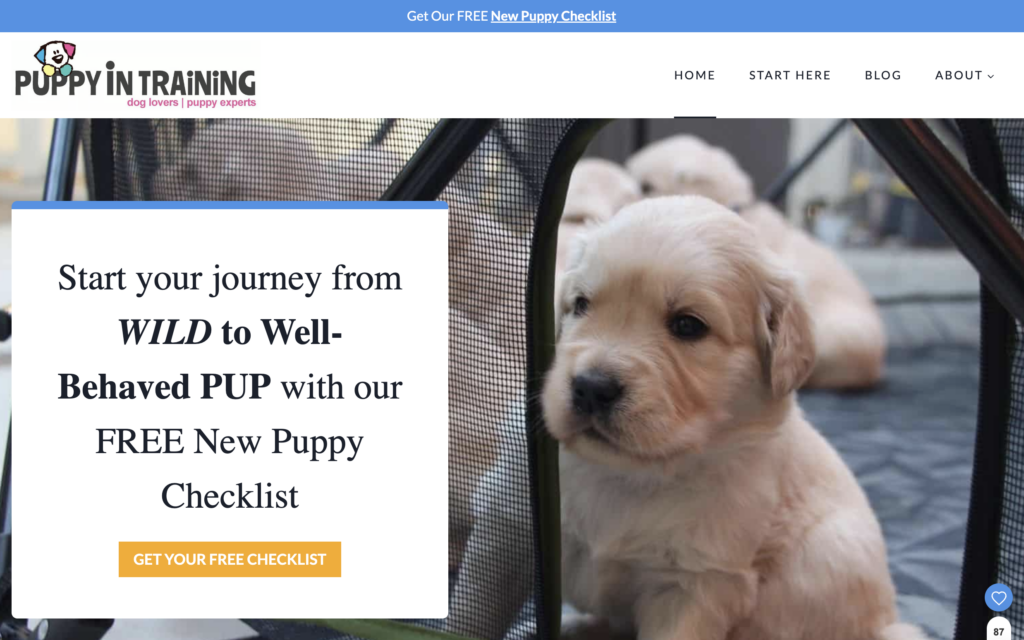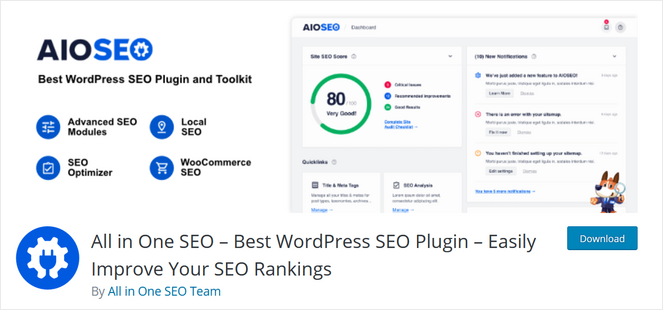
W ondering how to get started in pet blogging?
Pet blogging is an exciting and rewarding niche that lets enthusiasts share their experiences, knowledge, and love for animals with a wider audience.
It’s all about creating content focused on pets, like care guides, health tips, training advice, and adorable stories and pictures of furry companions.
Starting a pet blog can help build a community of like-minded individuals who share a passion for pets and their well-being. And you’re gonna learn exactly how to get it going, how you can make money with your pet blog, and important trends to help you strategize for the future!
In This Guide:
- Why Start a Pet Blog?
- Step 1: Choose Your Niche
- Step 2: Set Up Your Pet Blog
- Step 3: Create Engaging Pet Blog Content
- Step 4: Promote Your Pet Blog
- Step 5: Monetize Your Pet Blog
- Step 6: Build a Community
- Pet Blog Examples
- Future Trends in Pet Blogging
- Starting a Pet Blog – Summary
- Final Thoughts on How To Start a Pet Blog
Key Takeaways for How To Start Pet Blogging
- Choose Your Niche: Start your new blog with a narrow focus on a specific, less competitive sub-niche like rescue dogs, indoor cats, or pet health to attract a targeted audience.
- Set Up Your Blog: Use WordPress for its customizable themes and awesome plugins for bloggers. Register a memorable, brandable domain name and choose reliable hosting, such as Bluehost.
- Create Engaging Content: Mix different content types like videos, photos, and stories. And write informative, well-researched posts with a friendly tone.
- Promote Your Blog: Use a variety of SEO, social media, and email marketing to drive traffic. And boost your efforts by collaborating with other pet bloggers and influencers.
- Monetize Your Blog: Try your paws at affiliate marketing, ads, sponsored posts, and selling products. And as you do, try to build brand partnerships with pet product manufacturers.
- Build a Community: Engage with your audience through comments, Facebook groups, social media, and your email newsletter. And encourage more user-generated content to boost engagement and foster a sense of community.
- Stay Updated with Trends: Incorporate video content from the start and consider starting a vlog about your life with your pets. Make good use of AI and data analytics to understand your audience better.
- And Remember – Consistency is Key: Maintain a regular posting schedule to keep your blog active and relevant. And use a content calendar to organize and plan your posts.
Why Start a Pet Blog?
Starting a pet blog has tons of perks. For one, it’s fun to share your pet adventures, make lasting memories, and gather a loyal crowd of fellow pet lovers. Plus, you can educate readers about pet care, making a positive difference in the lives of animals and their owners.
The pet industry is a big market that is still growing. 67% of households in the United States are pet parents with at least one pet, according to the American Pet Products Association (APPA).

This makes it a great time to share what you have to say with this thriving community of pet lovers who love their furry friends. The audience for pet blogs is expanding and shows no sign of slowing down.
Overall, pet blogging is an excellent passion project and a viable way to generate a lucrative (and somewhat passive) full-time income, so what’s stopping you? Let’s look at how to get started.
Step 1: Choose Your Pet Blog Niche
Picking your perfect niche is key to your blog’s success. Ever heard the phrase “The riches are in the niches“?
Targeting a specific audience is easy when you have a clear and focused niche, and this makes your blog more relatable and authoritative to those people.
This narrow focus on your particular niche can really set you apart from the competition. Readers who think of your blog as a go-to resource are more likely to become loyal followers.
You can always expand your niche for your pet care blog once you’ve grown your audience a bit. But there are always plenty of blog post ideas to write about, even in a super narrow niche, so don’t broaden too soon.
Popular pet blogging niches cater to different interests and needs within the pet owner community, so here’s some ideas to get you going.
Specific Types of Pets or Breeds:
- Rescue dogs
- Indoor cat care
- Exotic or small pets (e.g., reptiles, birds, guinea pigs)
Pet Care:
- Proper care and grooming
- Pet food brands and feeding
- Pet travel tips
- General well-being
- Pet product reviews
Pet Training:
- Strategies for teaching new tricks
- Managing behavior
- Positive reinforcement training tips
Pet Health:
- Common ailments and health conditions
- Preventative care for pet health issues
- Latest advancements in veterinary medicine
To pick your niche, figure out:
1) what you’re passionate about, and
2) What you have a reasonable amount of knowledge about.
The overlap of these two on a Venn diagram would be where your potential niche lies.

The best blogs come from a genuine love for the topic. This is hard to replicate if you don’t love your subject, but it naturally draws in readers.
It’s also a good idea to do some market research to see if there are any gaps in the pet blogging world and what topics people are interested in.
Look at keywords, check out competitor blogs, and chat with potential readers on social media or online communities. Reddit or Quora are great resources to tap into for this kind of research.
When you align your passion with what the market needs, you’ll be more likely to find a niche that excites you and also has decent potential for growth and earning you a surprising amount of cash!
Step 2: Set Up Your Pet Blog
To begin with, you’ll need to choose the right platform for your blog.
Having a good-looking and professional blog design is key to drawing in and keeping readers. I recommend the WordPress blogging platform for its many customizable themes, which can give your blog a unique and polished look. It’s also user-friendly and flexible and has a vast selection of plugins tailored to various needs.
The next step is to pick and register a domain name that reflects your blog’s niche. Take your time mulling over different domain name ideas, ensure the social media handles are available, and check that you’re not infringing on any trademarks or copyrights.
Up to 70% of people are skeptical of unconventional domain suffixes like “.biz” and “.eu.” So, to avoid making your website seem sketchy, stick to the classic domain suffix .com if possible.
For more tips, check out our guide on how to come up with a blog name.
For a secure hosting plan that will make your blog accessible online, Bluehost is a highly recommended provider. It offers seamless WordPress integration, 24/7 support, and reliable uptime.
Exclusive offer for BlogTyrant readers
We have partnered up with Bluehost to get 60% off for our readers! You also get to register a FREE domain for a year which normally costs around $14.99 per year.
Claim this Exclusive Bluehost offerHow to Set up Your Pet Blog with Bluehost
To get started, visit the Bluehost offer page. You’ll see the exclusive deal and its details. Click the Get Started button, as shown in the screenshot below:

On the next page, you’ll be asked to choose a pricing plan. You can get started for as low as $2.75 per month with a basic shared hosting plan.
Next, you can create your domain name. Under the Create a new domain option, simply type in the blog name you want like blogtyrant, and choose your extension like .com or .blog.

If you’ve already purchased a domain name, choose the Use a domain you own option instead.
Next, enter your account information and review your plan details. The 36-month account plan will give you the best value.

Now all that’s left to do is enter your payment information to complete the purchase. When you’re done, you’ll get an email with your login details.
When you log into your Bluehost account, go to the My Sites tab. Here, you need to Log in to WordPress by entering your login credentials.

Once you’re logged in, you can set up and customize your new poetry blog. To launch the WordPress wizard, click on the Create Site button.

The wizard is really easy to follow, so we won’t go into detail. Simply follow the onscreen steps to complete setting up your blog with Bluehost.
If you need step-by-step instructions for the WordPress installation wizard, see our tutorial on how to install WordPress in less than 5 minutes.
A key aspect of getting your pet blog all set up is making sure your website is speedy enough. A fast-loading site makes for a better user experience and also helps with your search engine rankings. According to Google, sites that load in under three seconds manage to keep more visitors, while slower ones see people losing patience and clicking the back button.
To boost speed, go for a lightweight blog theme (one of my favorite themes is GeneratePress, which I use on my own pet blog), optimize your images, and think about using caching plugins.
A content delivery network (CDN) can also help. This spreads your content efficiently worldwide, meaning quick load times for visitors wherever they are.
For more recommendations, check out our list of the best WordPress themes for bloggers. You can also read our guide on how to make your blog look good.
WordPress plugins and tools can really boost the functionality and performance of your pet blog. One great tool is All in One SEO (AIOSEO).
This fantastic plugin helps you optimize your blog for search engines. AIOSEO will guide you through your on-page search engine optimization, meta tags, and more so that your content is discoverable and ranks higher in search results.
- Easy setup wizard
- On-page SEO optimization
- Tru-SEO score with actionable insights
- Unlimited SEO keywords
- Snippet preview to see how your post will look in search results
- Powerful XML Sitemaps
- Internal Link Assistant
- Local Business SEO
Step 3: Create Engaging Content For Your Pet Blog
Content creation for an engaging pet blog involves a blend of creativity, consistency, and relevancy. Pet lovers want entertaining, engaging, and informative content. Here are some key elements:
Types of Content to Create
For pet blogs, keep your audience hooked by creating different types of content.
Videos with pet care tips, adorable photo galleries, and engaging stories could all potentially be popular with your readership and keep people coming back to the site regularly for their next fix of pet dopamine.
Videos could show grooming, training, or just those funny antics pets get up to that we all love to watch.
Personally, I’ve lost count of the amount of hours I’ve wasted online watching cat videos tackling obstacle courses constructed from plastic cups – and I don’t even own a cat!
Evidence indeed that including high-quality visuals adds appeal and encourages readers to share your posts.
Tips on Writing Engaging and Informative Posts
Writing for a pet blog should blend emotional engagement with useful info. Use a friendly tone and sprinkle in stories about your pets to connect with readers. Because who doesn’t love a good pet story?
Ensure your posts are well-researched and offer valuable tips on your niche – whether that’s pet care, nutrition, or training.
Lists, bullet points, and subheadings make good use of white space to keep your posts scrollable and easy on the eye – nobody wants to be confronted with a massive wall of text!
Encourage interaction from your readers. Ask questions and invite them to share their experiences in the comments. People always love talking about their own pets.
Frequency of Posting and Maintaining a Content Calendar

Consistency is the secret sauce to keeping your readers coming back again and again.
Try creating a content calendar to plan and schedule your posts ahead of time to give them a reason to check the site regularly. This helps you build a loyal audience.
Posting new content at least once a week keeps your blog active and relevant. Regular updates also boost your search engine rankings, making your blog easier for new people to find.
Plus, a well-organized content calendar helps you get a good mix of content types and helps you manage your time like a pro.
Step 4: Promote Your Pet Blog
Driving traffic to your pet blog takes a multi-faceted approach.
- Start with SEO. Use relevant keywords that pet owners are searching for to help your blog rank higher on search engines (check out our full guide on SEO for bloggers).
- Social media is another great tool. Share your posts on Instagram, your blog’s Facebook page, and Twitter to reach a bigger audience (FYI – pet blogging does great on Instagram – and we have a whole blogging on Instagram walkthrough to get you started).
- Don’t forget about YouTube. Make interesting videos related to your blog topics and link back to your blog in the descriptions.
- Email marketing can help, too. Build a mailing list and send out regular newsletters with your latest posts and pawsome pet care tips.
- Linking up with other pet bloggers and influencers can also be really important. You could try collaborating on projects or social media takeovers to tap into their audience.
- Another great idea is guest posting on popular pet blogs to drive traffic. If you offer some valuable content to these blogs, you can get a link back to your own site.
- And if you have a few bucks to throw at it, paid advertising can really amp up your reach. You could try investing in social media ads aimed at pet owners or use Google Ads to show up in pet-related searches. Just be aware this is not always a sustainable approach. Your traffic *will* drop off a cliff once you stop paying, so you need to make sure you have a solid organic strategy in place as well.
Concentrate on several of these tactics, to begin with, then add more methods to expand your readership as you become more confident. This is an effective approach to sustainable growth.
Step 5: Monetize Your Pet Blog
When it comes to revenue, a blog dedicated to pets can lead to monetization with income from affiliate marketing, sponsorship deals, and ads.
Successful pet blogs can also attract brand partnerships that lead to paid collaborations with pet product manufacturers.
How Do Pet Blogs Make Money?
Starting a pet blog is definitely a fun way to earn some extra cash, and there are multiple ways to make passive income from your website. Let’s look at each in a bit more detail.

Affiliate marketing
One of the easiest methods is affiliate marketing. Basically, you talk about your favorite products and include affiliate links in your posts. When someone clicks your link and buys something, you get a commission. Some popular pet affiliate programs are Amazon Associates and Chewy’s Affiliate Program.
On my own pet blog, the majority of my earnings come from affiliate commissions on online dog training courses.
Course creators have relatively little overhead after they invest the initial time in creating the course. This means they can be very generous with their commissions (get ideas for the best digital products to sell here).
Commissions of over 50% of the purchase price are not unusual for introducing a new buyer to their ecosystem.
Advertising
Ads are another no-brainer to make money. You can use ad networks like Google AdSense, Ezoic, or the Mediavine Ad Network to show ads on your blog.
Each click or impression can bring in cash, and it adds up over time, especially if you have a lot of traffic.
Pro Tip: Keep an eye on your affiliate commissions when you introduce ads on your site. My affiliate income dropped when I turned on ads.
Affiliate income can be more lucrative, so if a reader is clicking something on the page, you want it to be whatever pays you the highest value.
Sponsored posts
With sponsored posts, companies might pay you to write about their products, giving their brand some exposure while adding value to your content.
Plus, these sponsored posts can pay really well, especially if you have a big audience!
Selling your own products
Think about creating and selling pet-related products like eBooks and merchandise or even designing an online course. This has the double benefit of bringing in the cash and also helping you build your brand identity.
Wondering how to write an ebook? See these tips in our guide to writing an ebook.
Brand partnerships
Brand partnerships can result in paid collaborations with pet product manufacturers. These partnerships with big names in the pet care industry can either be long-term or one-off projects. They can offer a good boost to your blog’s credibility, so are worth looking into.
Pro Tip: Make sure brand partnerships align with your own morals and values. There are brands I won’t promote because my audience is attracted by my force-free, science-based stance on pet training and behavior.
If I promoted something that is “off-brand” and goes against that, I’d lose a big chunk of my readership.
Combine these methods to create a diversified income stream. Relying on multiple sources of income spreads your risk and increases your earnings potential.
Start by integrating affiliate links and ads, then gradually expand to sponsored posts and selling products.
By diversifying, you can ensure that if one revenue stream drops, it won’t massively impact your total income from your blog.
Step 6: Build a Community
Engaging with your audience is key to making your pet blog a success. Building a loyal reader base creates a sense of community and keeps people coming back, boosting your blog’s visibility and influence.
Start by replying to comments. When readers take the time to leave a comment, acknowledge them with thoughtful responses. This interaction makes your audience feel appreciated and encourages even more engagement.
Setting up a forum or Facebook group can really boost your community. These platforms let readers chat about pet-related topics, share stories, and ask for advice.
Here’s some info on how to set up a Facebook group:
And also be sure to check out our step-by-step guide for starting a Facebook group for your blog.
By jumping into these groups, answering questions, and sparking discussions, you can reinforce your role as a go-to expert in the pet world.
Hosting regular Q&A sessions or live chats lets you connect with your audience in real time, offering instant value and building trust.
Encouraging user-generated content, like pet photos or stories, helps your readers feel more involved and invested in your blog.
Awesome Pet Blog Examples
Successful pet bloggers offer valuable insights into what works in the pet blogging world. Take Colby Morita, for example, the guy behind Puppy In Training.

Colby’s made a name for himself by offering practical, actionable advice on training service dogs. His secret? Focusing on niche content, posting consistently, and mixing it up with videos and podcasts. That’s how he’s built such a loyal following.
Another example is the team behind Adventure Cats. This unusual blog is dedicated to helping cat lovers explore the great outdoors with their feline friends.
Their success stems from tapping into a unique niche, and they offer detailed guides, engaging stories, and stunning photography of adventurous cats.

This laser focus on a narrow niche has helped them build a passionate, like-minded community of cat enthusiasts.
These bloggers succeed due to their unique approaches. They have identified and catered to very specific interests within the pet community. High-quality content, regular updates, and genuine engagement with their audience are key factors.
Emulating these strategies can help you build a thriving blog that connects with readers and stands out in the crowded pet blogging niche.
Future Trends in Pet Blogging

Emerging trends and technologies are shaping the future of pet blogging in exciting ways. One big trend is the rise of video content.
Platforms like TikTok and YouTube are becoming go-to spots for engaging with audiences through fun pet videos. Virtual reality (VR) and augmented reality (AR) are also making waves, offering experiences like virtual pet playdates and AR pet training tools.
AI and data analytics are becoming crucial, helping bloggers understand their audience and tweak content. Wearable tech for pets, like fitness trackers and health monitors, is rising, providing fresh content ideas for bloggers.
Future predictions for pet blogging are thrilling, with a bigger focus on personalized content. As technology advances, bloggers will offer more tailored advice and products based on each pet’s needs. Eco-friendly pet products are also set to become a big trend.
To stay ahead, pet bloggers should quickly adopt new technologies and platforms. Trying different content formats, like VR tours of pet-friendly spots or live-streamed training sessions, can help you stand out.
Partnering with tech companies to review and showcase the latest pet gadgets can also keep your blog on the cutting edge.
By staying aware of emerging trends and being open to innovation, pet bloggers can grow their audience and stay relevant.
Starting a Pet Blog – Summary
Creating a successful pet blog takes passion, strategy, and adaptability. From choosing a niche to engaging with your audience and staying on top of the latest trends, each step matters.
By producing high-quality content, promoting effectively, and monetizing smartly, you can build a thriving pet blog.
Stay connected with your community, embrace new technologies, and keep innovating to ensure your blog stays fresh and relevant.
Final Thoughts on How To Start a Pet Blog
I hope this guide on how to start a pet blog has helped you. Now, you can turn your passion into an online business!
If you enjoyed this post, be sure to check out our post on 101 blogging tips for beginners. It’s the perfect post during the early stages of your blogging journey. Bookmark it so that you can come back to it as and when you need.
And don’t forget to sign up for our email newsletter for more helpful blogging tips!



0 Comments
Join in. The comments are closed after 30 days.